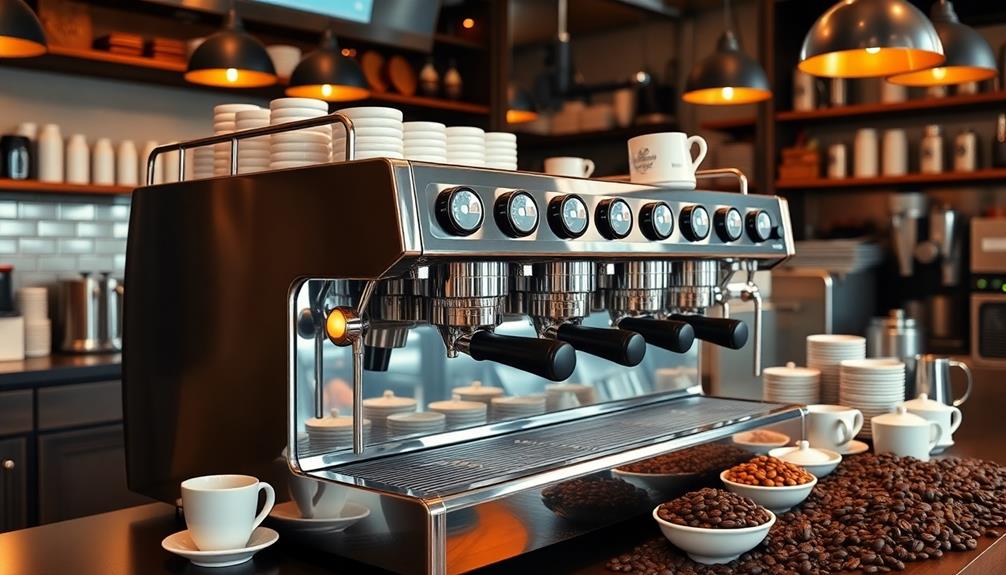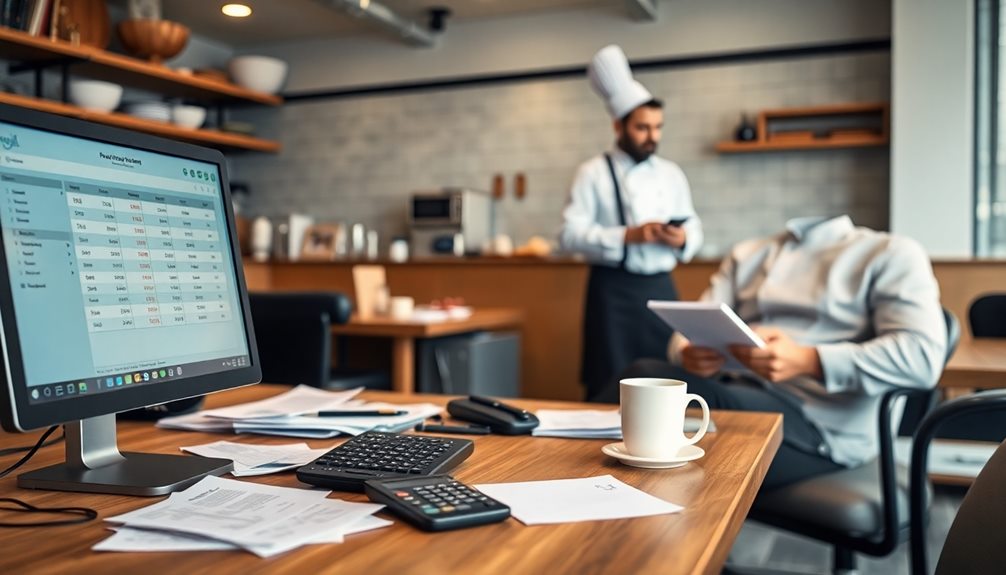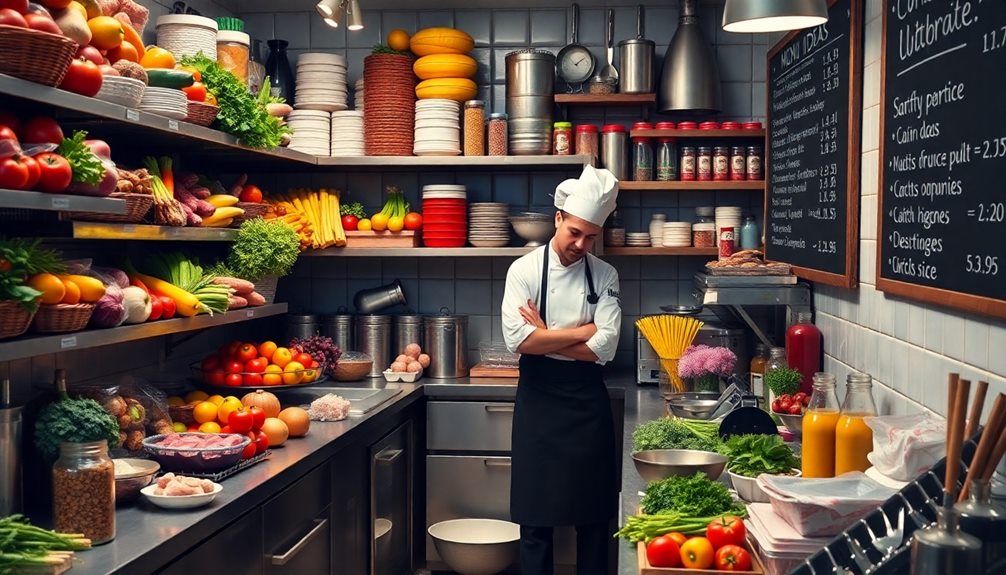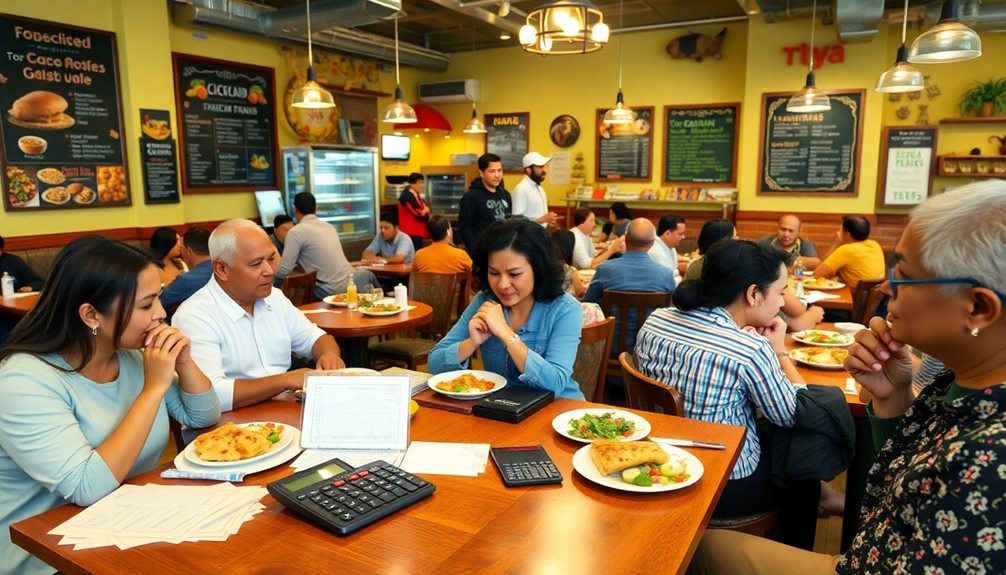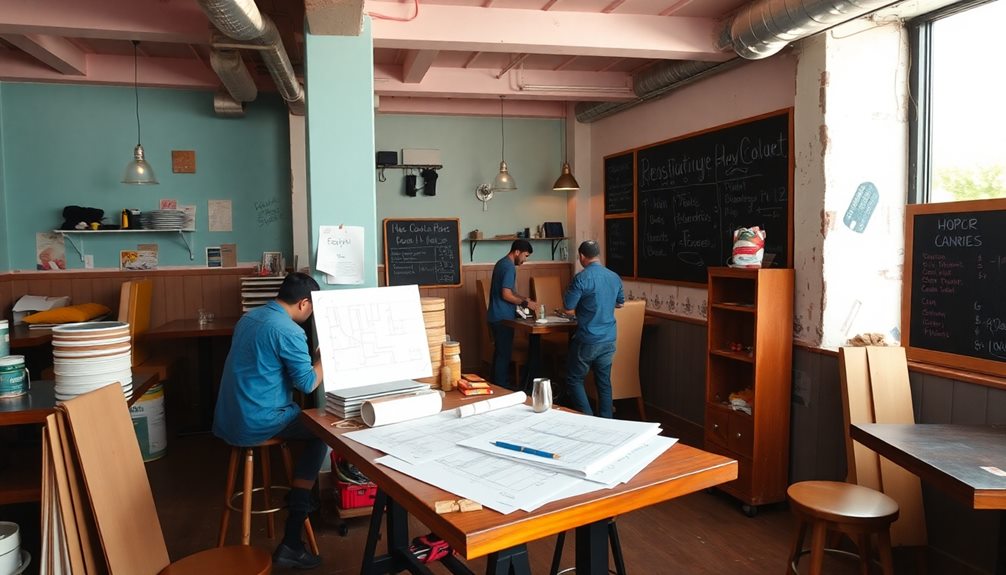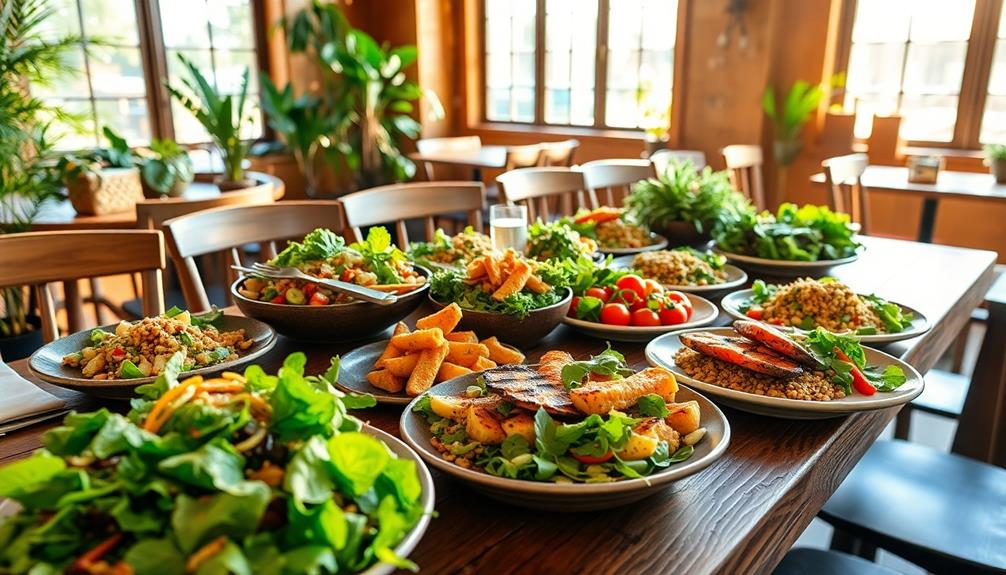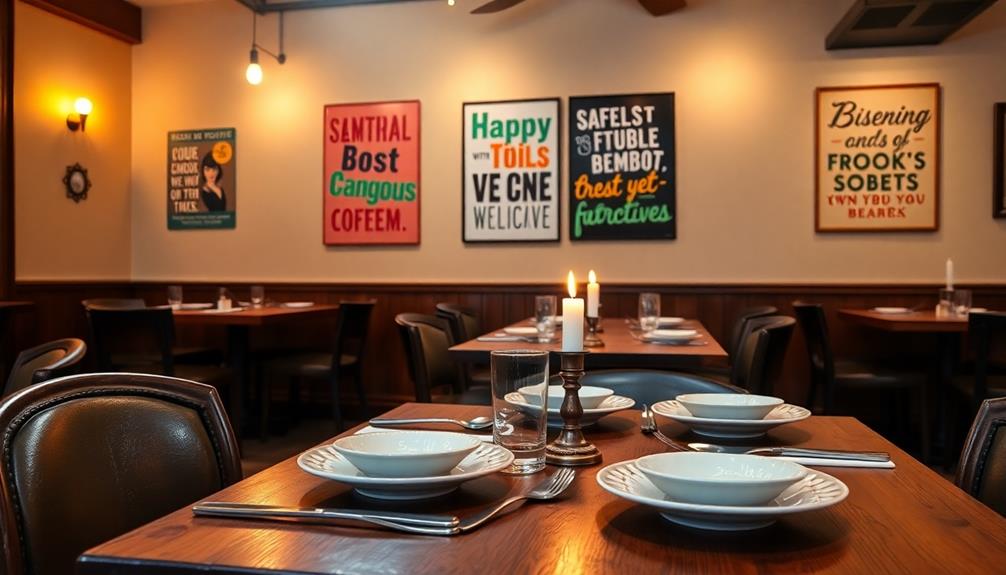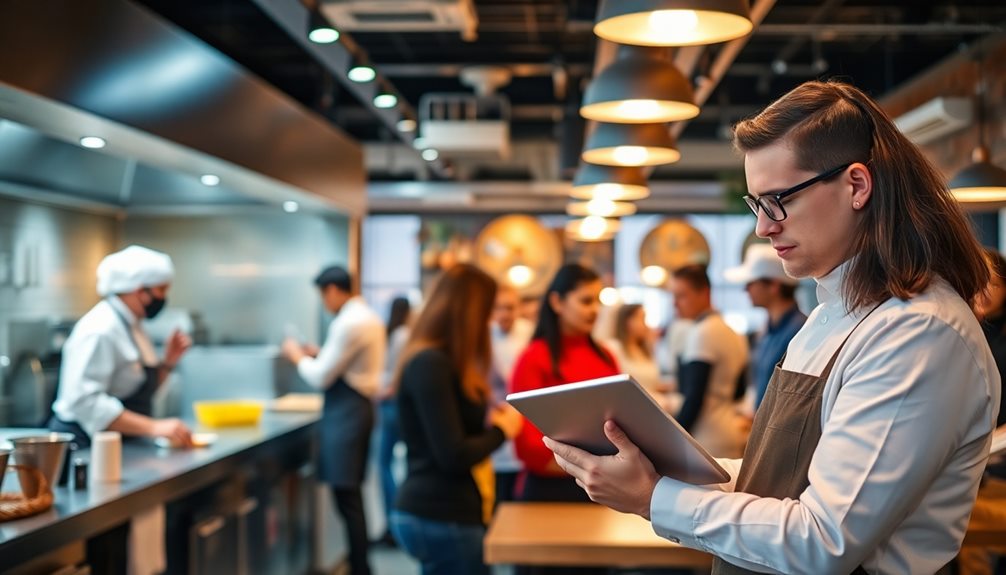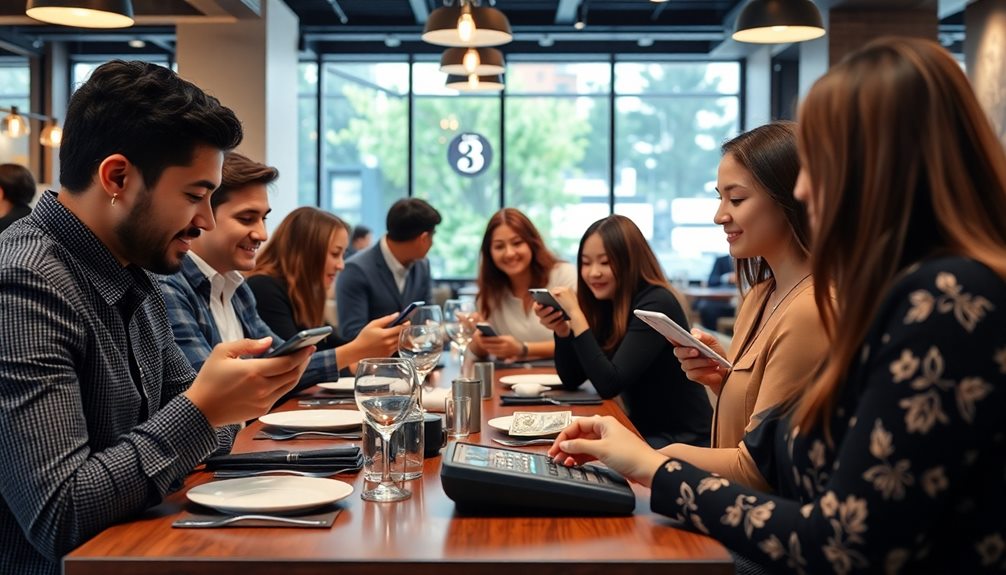The best restaurant accounting software helps you streamline financial management, targeting common issues like food costs that about 58% of owners face. Options like Restaurant365 and QuickBooks Online cater to different needs and budgets, offering everything from payroll to expense tracking. If you're looking for something more affordable, Xero and ZipBooks provide solid features at lower prices. These tools not only save you time but also enhance accuracy with automated processes. Interested in learning which software fits your needs best? There's plenty more to discover about the top solutions and what they can do for your restaurant.
Key Takeaways
- Restaurant accounting software streamlines financial tasks like invoicing and expense tracking, specifically catering to the unique needs of restaurants.
- Top options include Restaurant365, QuickBooks Online, Xero, ZipBooks, and Plate IQ, each offering varying features and pricing.
- Pricing ranges from $15/month for basic plans to $689/month for extensive systems, allowing businesses to choose based on their budget.
- Key features include real-time reporting, automated invoicing, inventory management, and customizable financial reporting for better decision-making.
- Look for cloud-based solutions with strong customer support and integration capabilities for existing POS systems to enhance operational efficiency.
Overview of Restaurant Accounting Software
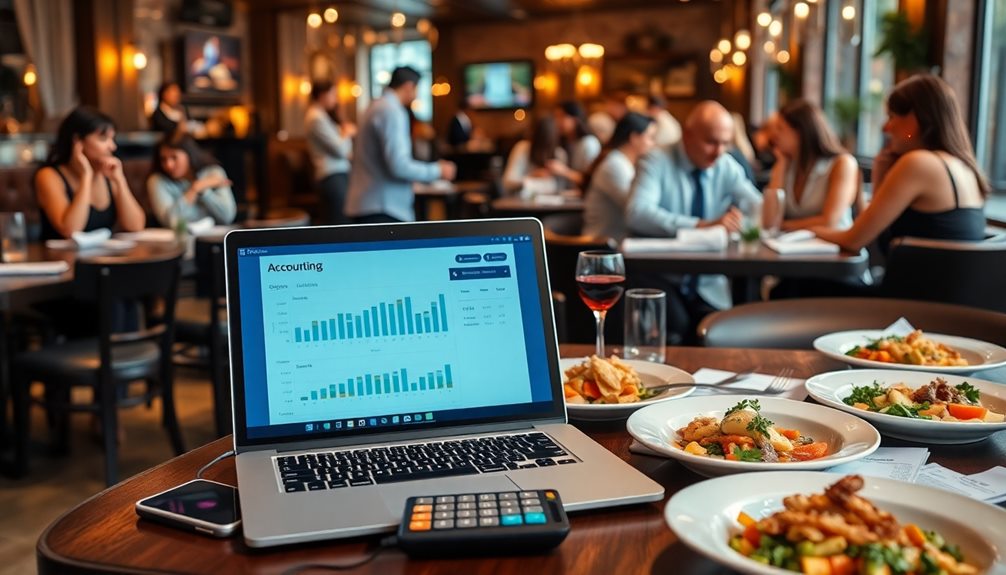
Restaurant accounting software plays an essential role in helping you manage your financial tasks efficiently. By streamlining processes like invoicing, expense tracking, and inventory management, this software addresses common challenges, such as the food costs that 58% of restaurant owners identify as a key concern.
With options like Restaurant365 and QuickBooks Online, you'll find tailored features, including POS integration and real-time financial reporting capabilities.
When selecting restaurant accounting software, consider the monthly fees, which can range from $15 for basic services to $689 for extensive systems. It's crucial to choose a solution that aligns with your budget and operational needs.
Popular software solutions also offer benefits like automated accounts payable processes and payroll management, enhancing your overall business efficiency.
Moreover, trends in restaurant accounting software are shifting towards cloud-based systems, allowing for mobile access and on-the-go management. These systems also prioritize data security, ensuring that your sensitive financial information remains safe.
Top Restaurant Accounting Software Options
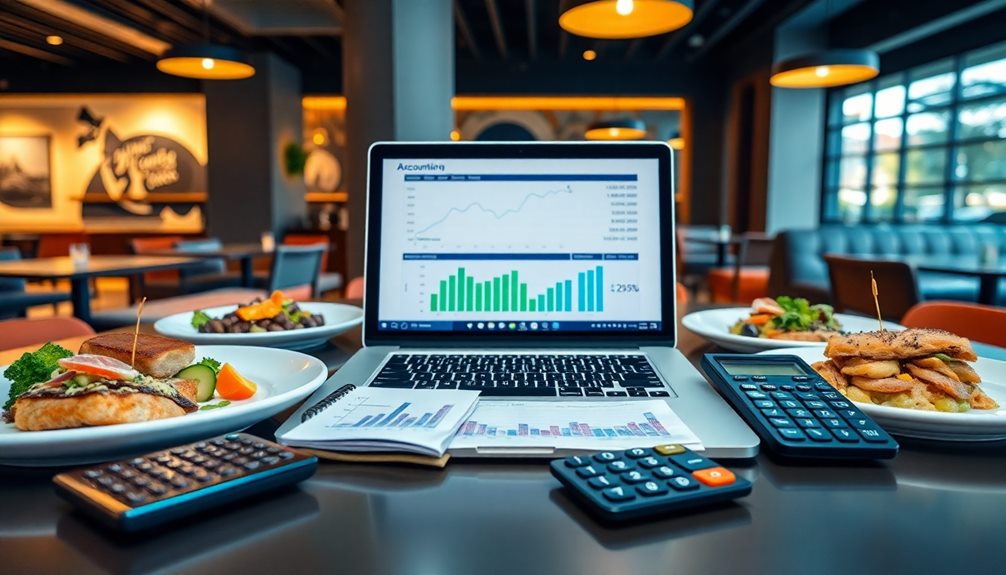
When choosing the best restaurant accounting software, you'll want to evaluate the features that matter most to your business.
Pricing and plans can vary widely, so it's important to compare options like Restaurant365, QuickBooks Online, and Xero to find what fits your budget.
Let's explore some of the top choices and what they offer.
Comprehensive Features Overview
Maneuvering the complexities of restaurant finances can be overwhelming, but choosing the right accounting software can simplify the process. When looking for a solution, consider how each option supports your restaurant bookkeeping needs.
Platforms like Restaurant365 offer thorough features, including accounts receivable management and inventory tracking, ensuring you maintain ideal financial health.
QuickBooks Online shines with its user-friendly interface, allowing you to track income, manage accounts payable, and handle invoicing, although payroll services are an additional cost.
If real-time reporting and payroll processing are essential for you, Xero integrates with over 1,000 applications, providing extensive functionality.
For smaller establishments, ZipBooks offers a budget-friendly subscription service with automated financial tracking, perfect for managing your profit and loss statements without breaking the bank.
Meanwhile, Plate IQ focuses on automating invoice processing and vendor management, offering custom pricing tailored to your specific needs, enhancing your operational efficiency.
Pricing and Plans Comparison
Choosing the right accounting software for your restaurant not only hinges on features but also on pricing that fits your budget.
When evaluating the best restaurant accounting options, consider how each pricing and plans align with your needs.
Restaurant365 starts at $469 per location per month, designed specifically for the restaurant industry, making it a solid choice for larger establishments.
In contrast, QuickBooks Online offers more affordable plans, starting at $24.50 per month, with extra costs for payroll services as an add-on.
If you're looking for even more budget-friendly options, Xero begins at just $15 per month and includes a free 30-day trial for new users.
For small businesses, ZipBooks stands out with its free and affordable plans, ensuring accessibility for smaller restaurants.
Essential Features and Benefits
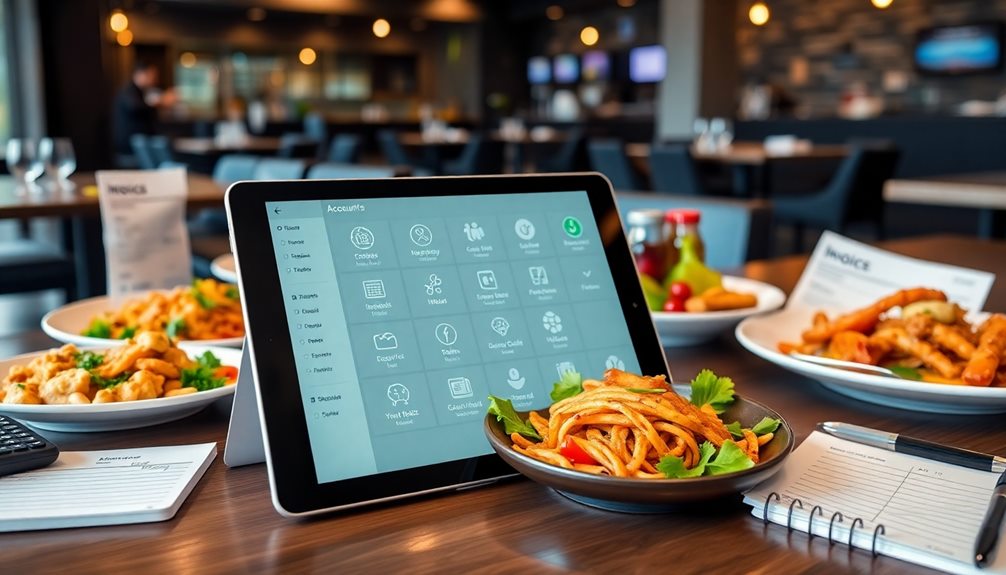
When you use restaurant accounting software, you're streamlining your financial management processes, which saves you time and reduces errors.
With real-time reporting insights, you can quickly assess your sales data and make informed decisions to boost your restaurant's performance.
These essential features empower you to maintain control over your finances and enhance your overall operational efficiency.
Streamlined Financial Management
In today's fast-paced restaurant industry, effective financial management is essential for success. With the right restaurant accounting software, you can achieve streamlined financial management that simplifies your operations and enhances profitability. Here are some key benefits:
- Automated invoicing: Reduce manual entry errors and save time by automating your invoicing and accounts payable processes.
- Real-time financial insights: Integrate with your POS system to gain accurate profit and loss reporting, helping you make informed decisions.
- Inventory management: Track food and beverage costs effectively, minimizing waste while optimizing expenses.
- Customizable financial reporting: Analyze sales, labor data, and budget variances to facilitate proactive financial management.
Additionally, features like automated payroll management and tax compliance guarantee you can efficiently handle payroll duties and adhere to regulations.
You'll find that expense tracking becomes easier, allowing you to keep a close eye on your financial health. By leveraging these tools, you can focus on what you do best—delivering exceptional dining experiences—while your restaurant accounting software takes care of the financial heavy lifting.
Real-Time Reporting Insights
Real-time reporting insights are a game-changer for restaurant owners looking to enhance profitability and operational efficiency. With access to up-to-date financial data, you can make informed decisions that drive success. Integrating your accounting software with POS systems guarantees maximum reporting accuracy, automating data flow and minimizing manual entry errors.
Here's a breakdown of essential features and benefits:
| Feature | Benefits |
|---|---|
| Real-Time Financial Data | Enables quick decision-making |
| Profit and Loss Reports | Track spending per sales dollar |
| Customizable Sales Reports | Analyze menu performance and trends |
| Budget Variance Analysis | Proactive financial management |
| Automated Report Sharing | Promotes transparency among stakeholders |
Regular access to profit and loss reports helps you stay on top of your financial management. By facilitating budget variance analysis, you can identify areas for improvement and adjust your strategy accordingly. The automated report-sharing feature fosters collaboration within your team, promoting a culture of informed decision-making. Embrace real-time reporting insights to elevate your restaurant's performance and achieve lasting success.
Advantages and Disadvantages
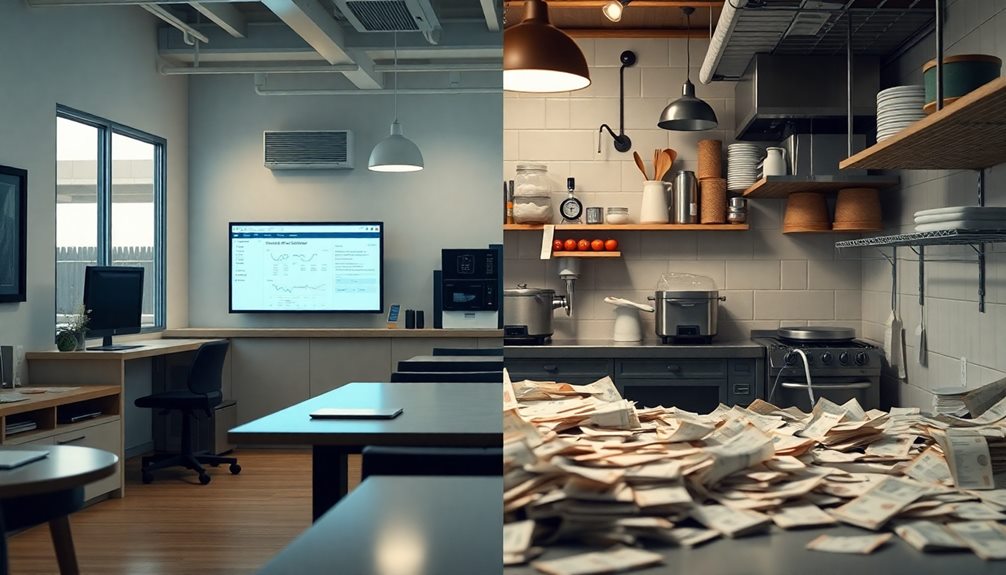
How can restaurant accounting software transform your business? By leveraging tailored solutions, you can enhance your operational efficiency and streamline financial tasks. Here are some advantages and disadvantages to take into account:
- Advantages:
- Restaurant accounting software, like Restaurant365, offers restaurant-specific functionalities, including inventory management and seamless integration with POS systems.
- Cloud-based solutions provide real-time access to financial data, enabling quick decisions that improve daily operations.
- Automated processes save you significant time—averaging 16 hours monthly—on payroll management and invoicing, allowing you to focus on core business activities.
- Disadvantages:
- Some general-purpose accounting software, like QuickBooks Online, may lack vital industry-specific functionalities, leading to gaps in tracking metrics like food costs and labor expenses.
- The cost can be a concern, with monthly fees ranging from $289 for basic services to $689 for advanced features, which mightn't be feasible for every restaurant.
Key Trends in Accounting Software
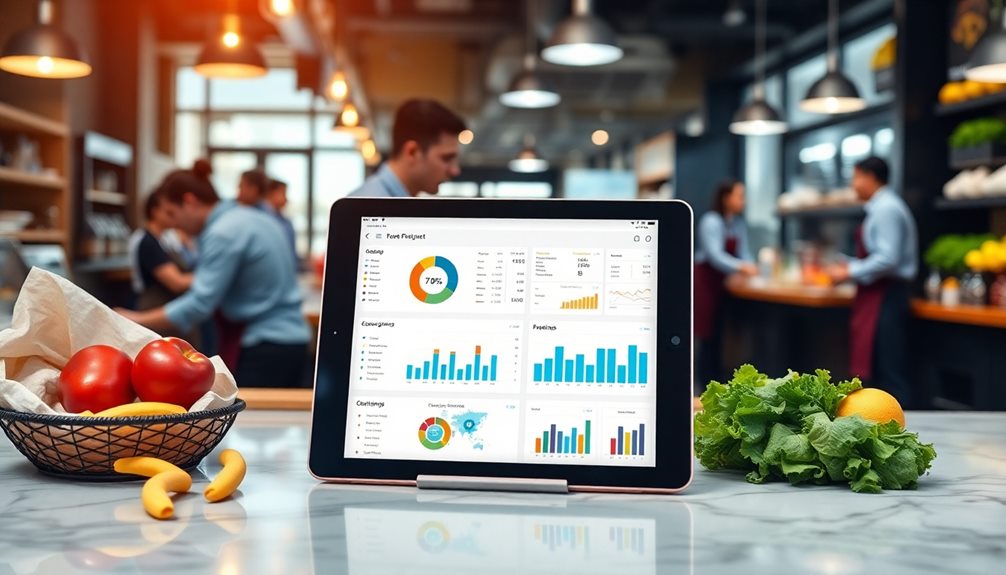
As the restaurant industry evolves, so does the technology that supports it. One key trend is the rising demand for cloud-based accounting solutions. These platforms provide real-time access to financial data, enhancing collaboration among your restaurant teams and stakeholders.
Mobile access is also becoming essential, allowing you to monitor finances and make decisions on-the-go, which can greatly improve operational efficiency.
Additionally, the integration of artificial intelligence (AI) is gaining traction. This technology enables predictive analytics that can help you with more accurate budgeting and forecasting. You'll find that industry-specific accounting software now includes features tailored to your needs, such as tracking expenses and evaluating profitability.
Another trend is the prioritization of data security measures. Software providers are implementing advanced encryption and compliance protocols to protect your sensitive financial information.
Finally, sustainability tracking features are emerging, enabling you to monitor your environmental impact alongside financial performance.
These innovations in restaurant management tools not only streamline your operations but also help you stay competitive in a dynamic market. Keep an eye on these trends to guarantee your restaurant's accounting practices evolve with the industry.
Choosing the Right Software
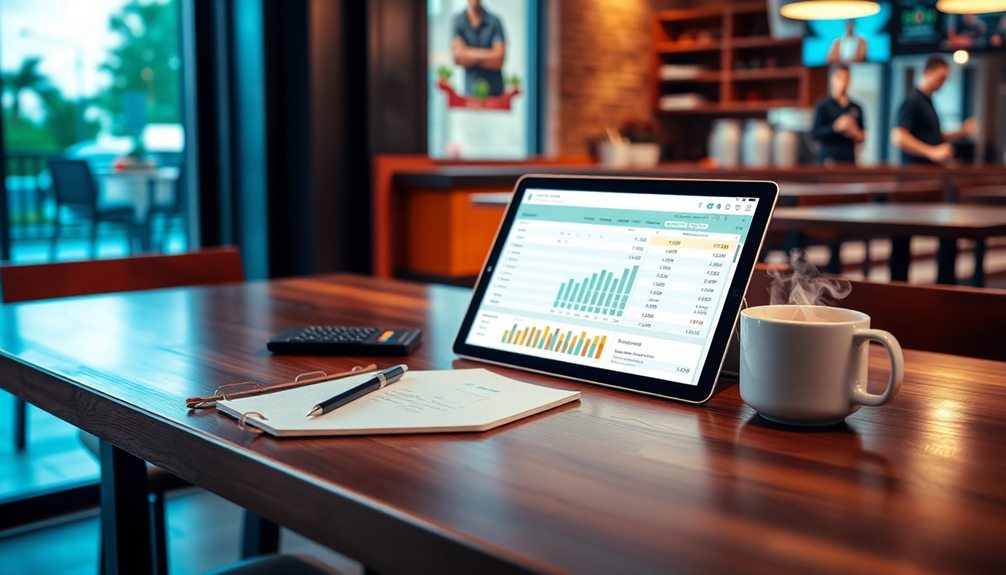
Steering through the myriad options for restaurant accounting software can feel overwhelming, but focusing on key factors can simplify your decision-making process.
Start by evaluating the pricing structure of various software solutions. Plans can range from $15/month for basic options to $689/month for more thorough services.
Next, consider the integration capabilities with your existing POS systems and payroll providers. Seamless connections enhance operational efficiency and data accuracy.
Look for software that includes features tailored specifically for restaurants, such as:
- Inventory management
- Expense monitoring
- Sales tracking
- Scalability
These elements will address your unique financial needs. As you assess your options, verify the software can scale with your business, especially if you plan to expand to multiple locations or introduce new services.
Lastly, don't underestimate the importance of customer support. Check user reviews to gauge the software's reliability and the quality of assistance you can expect when issues arise.
Frequently Asked Questions
What Is the Best Accounting Software for a Restaurant?
When you're searching for the best accounting software for your restaurant, consider your specific needs. Look for features like inventory management, payroll integration, and ease of use that match your operational requirements and budget.
What Is the Best Accounting Method for Restaurants?
"Don't put all your eggs in one basket." For restaurants, using the accrual method offers a clearer financial picture, while cash basis simplifies cash flow. A hybrid approach balances daily operations with long-term reporting needs effectively.
What Is the Best Accounting Software for the Hospitality Industry?
When considering accounting software for the hospitality industry, you'll want options that streamline operations. Look for features like inventory management, invoicing, and integration with POS systems to enhance efficiency and accuracy in your financial processes.
What Software Do Accountants Use Most?
Accountants often rely on software like QuickBooks Online or Xero for their ease of use and features. You'll find that FreshBooks and Wave are also popular for specific needs, especially among smaller businesses.
Conclusion
In the bustling kitchen of your restaurant, the right accounting software is like a well-tuned knife—essential for slicing through the chaos of finances. As you navigate the menu of options, remember that the perfect software can elevate your business, turning numbers into nourishing insights. Don't settle for just any tool; choose one that complements your unique recipe for success. Embrace the digital age, and watch your restaurant thrive like a perfectly risen soufflé.

